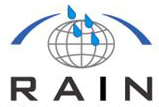The last couple of months the news has been overflowing with horrible and shocking images of Islamic State (IS) warriors driving the local people out of their houses, beheading Western journalists and breaking-down ancient artifacts of the region. Less is spoken about the influence of IS on water in the area they have occupied. How catastrophic is this self-proclaimed caliphate for the availability of this life sustaining resource in the Middle East?
The Tigris and Euphrates are the well-known arteries of the Mesopotamian region. These rivers gave home to many civilizations that used its water to build the world’s first cities and irrigation systems. However, the recent years Iraq has suffered from increasing scarcity of water as a result of heavy water use, less rainfall and other factors. In addition, Turkey has also affected the availability of water in the region. Both the Tigris and the Euphrates spring in the east of Turkey. In the 1990s, it has been accused of draining Syria and Iraq by the construction of new dams just above the Turkish-Syrian border. As a result of this upstream damming and climate change, prospects say that both rivers won’t have sufficient flow to the sea in 2040. Furthermore, the various dams in Turkey also form a threat to the quality of the water for its downstream users. An increasing proportion of the available flow will consist of return irrigation flows containing high concentrations of agricultural chemicals and salts. Altogether, water is becoming scarcer in a country which once flourished because of this important natural resource.
Looking at its strategy, IS clearly understands the value of water in the region and uses it to expand its power in various ways. IS militants who have rampaged across the northern part of Iraq have increasingly been using water as a weapon. By taking dams, IS is cutting off the water supply to villages. In some cases, people are forced to leave a particular area because of this lack of water. The river dams in the Tigris and Euphrates are extremely strategic points in the Iraqi landscape. They do not only provide water for the irrigation of the country’s vast wheat fields, but also generate energy. Each time IS seizes a dam, it gains a piece of Iraq’s limited water supply, allowing it to control who is able to irrigate crops, use electric power and drink. Hence, airstrikes from the West to stop IS from expanding are frequently launched towards these strategic dams. The Iraqi government is forced to provide waters to local communities in other ways in some areas, for instance by trucks.

Images: Wikicommons and AP
Farmers rely heavily on water for growing their crops, so when the water is cut off, they have to give in eventually. In this way, IS also uses water as a way of making money. By hampering of the supply of electricity and water, IS can force people to pay for access. In addition, prohibiting access can also lead to social support. In many conflicts, the population follows those who control the natural resources, because they simply cannot sustain themselves without it . To a certain extent, it creates a feeling of safety.
As any living creature, IS needs water to sustain itself. The leaders of the caliphate have been paying attention to the place of water in the Arab history. The growing scarcity makes water an important geopolitical actor. Controlling the water resources means controlling the area. By taking dams, IS expands its sphere of influence in Iraq and Syria. Strategically, it is a great move, however, for the inhabitants of the areas who rely on the supply of water and electricity of the dams it could be catastrophic. Even more today, since the international coalition is bombing the dams in order to reduce IS’ power. At last, a weapon of massive destruction has been found in the region: water!
More information:
Islamic State Jihadits are using water as a weapon in Iraq – Washington Post
Behind the veil of the Islamic State is a war for water – EJOLT
Amid Terror Attacks, Iraq Faces Water Crisis – National Geographic
Understanding the contemporary Middle East (Third Edition) edited by Jillian Schwedler & Deborah J. Gerner



